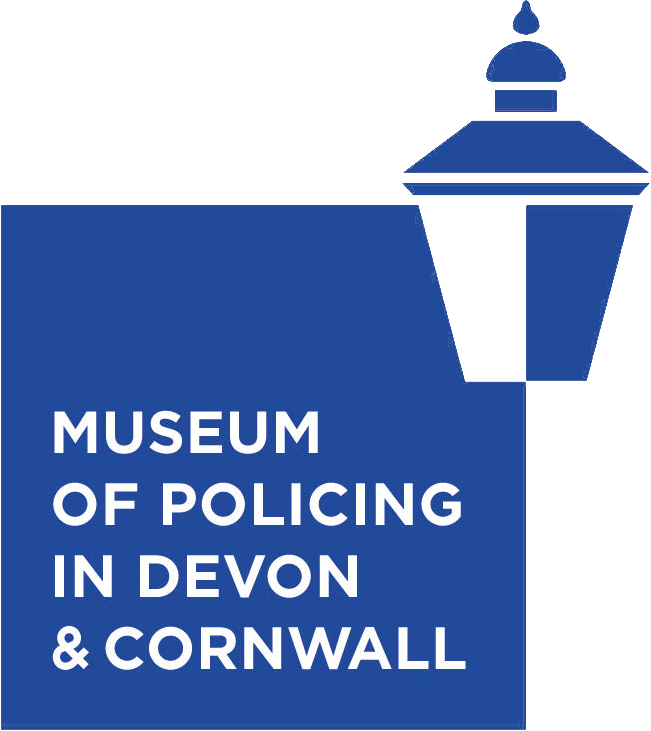Photographic Equipment Gallery
1. Kodak View Model B 6.5in x 4.75in plate camera, manufactured in England c1920’s. Bellows with rack and pinion focusing with Kodak Prontor 203mm lens. Complete with specially made wooden tripod with crank handle to move the camera up and down. Could have been used for portrait work such as ‘mugshots’ with the rotating portrait chair.
2. Rotating wooden portrait chair c1890’s, maker unknown. Used for ‘mugshots’, where the chair could be rotated for a side view. A wooden triangular prism was attached to the chair seat to ensure the sitter was uncomfortable enough to stay bolt upright.
3. Tailboard Plate detective camera. Wood & brass made by Watson, London. C.1892 – 1900. Kodak Anastigmat 5 x 8 lens. F4.5 8.5in made in New York. Comes with 1 double dark slide box. Would have required a long period of exposure to create a plate negative. People being photographed would have needed to have a neck holder to keep them still. Would have been used for scenes of crime photography and something similar may have been used to photograph victims of Jack the Ripper in the days before forensic photography was properly adopted into investigating crime.
4. Kodak No3A Folding Brownie camera. Eastman Kodak, New York, USA c.1910. Known as a ‘postcard’ camera with images approx. 8.5cm x 13.5cm (3.35in x 5.3in). The cube was for ‘top down’ composition. A red rear window helped with counting frames. An easy to carry and operate camera that was in use for scenes of crime and vehicle crash scenes.
5. Folmer Graflex Fingerprint camera, made in New York. Incorporates 4 small battery-operated lights under the metal cover to illuminate the exposure. Used 2¼ x 3¼ plates or negatives on cut film. Fingerprints could not yet be lifted off an item at the time this camera was in use. The camera was held over the fingerprint and with the help of the lights an exposure was made.
6. Kodak Instamatic 133 camera, made in England around 1969. Viewfinder camera, no focusing needed. Used a 126 sealed cartridge film and produced square format photographs. General use could have been ‘first on the scene’ capture of traffic incidents or criminal activity.
7. Polaroid 600 land camera made in the UK. Early 1980’s. Instant photos from a film pack with internal battery, and built-in flash. Autofocus, check and press to create a photo which develop in seconds. Used for scenes of crime and road traffic incidents.
8. Sankyo Super CM 400 Super 8 Cine camera. Manufactured in Japan from 1969 – 1973. 1.3/8.5 – 35mm auto and manual zoom lens. Auto and manual exposure, silent recording only. Possibly used for filming training events and missing person searches.
9. Nikon F301 35mm film, single lens reflex camera. Manufactured in Japan from mid-1980’s. Integral motor-drive which advances the film at 2.5 frames per second, however the completed film needed to be rewound manually. DX feature for automatic detection of film speeds and hotshoe mount above viewfinder for flashgun use. Nikkor 135mm, F3.5 high quality ‘prime’ lens. Used for scene of crime, forensics and public relations.
10. Nikon F100 35mm film, single lens reflex camera. Manufactured in Japan, around 1999. One of the world’s top cameras at the time for versatility and value for money. Integral motordrive which advances film at 4.5 frames per second with automatic rewind. Matrix metering technology, phase detection autofocus, DX film speed detection, image bracketing. Hotshoe flash mount above viewfinder. Vivitar 28 – 210mm macro zoom lens made in Japan in the 1990’s. Camera and lens used for scene of crime, forensics and public relations.
11. DJI Phantom 1 P330D Drone. Manufactured in China 2013/2014. One of the first commercially available drone vehicles, pioneered in Devon & Cornwall Constabulary by Inspector Andrew Hamilton, a Serious Collisions Inspector who deployed it at road traffic collision sites. Approximately 8 - 10 minutes flight time without a battery life indicator meant using a stopwatch to ensure the drone didn’t crash!
Gopro Hero4 camera attached to a gimbal for site filming in 4K30 at 8 frames per second for high quality footage and stills images. From 2017 Devon & Cornwall Police had a full-time drone team of 2 (plus 1 in Dorset) and from 2018 increased to 17 (16 in Dorset), used to assist armed response and traffic teams.


Post your own comment